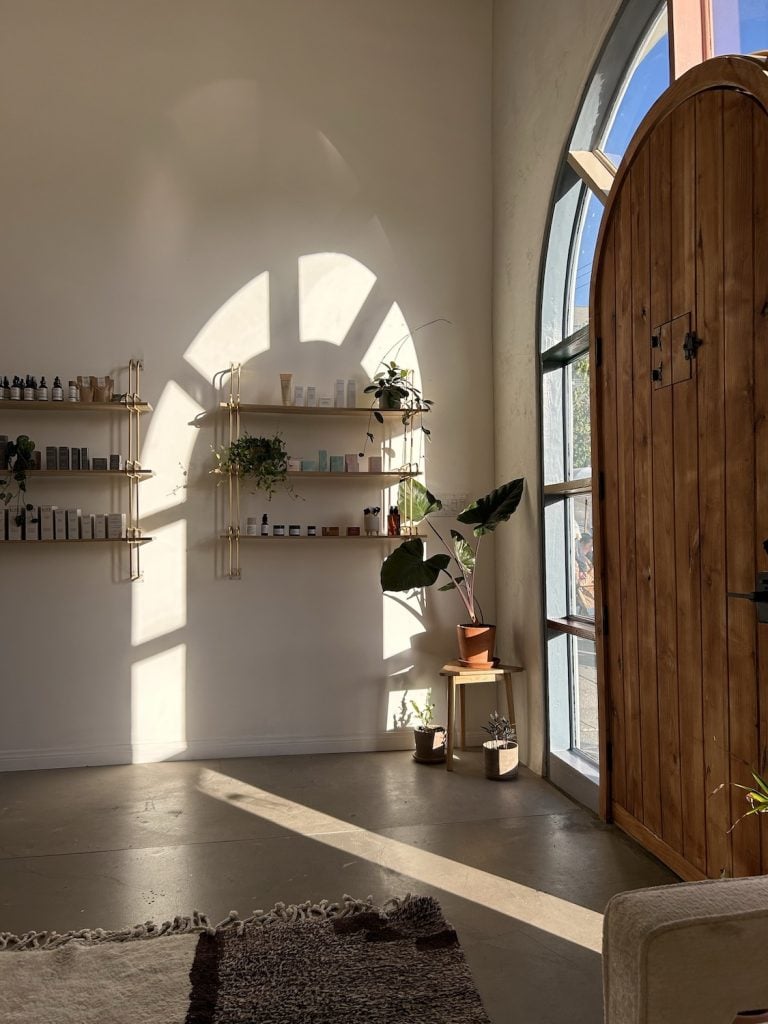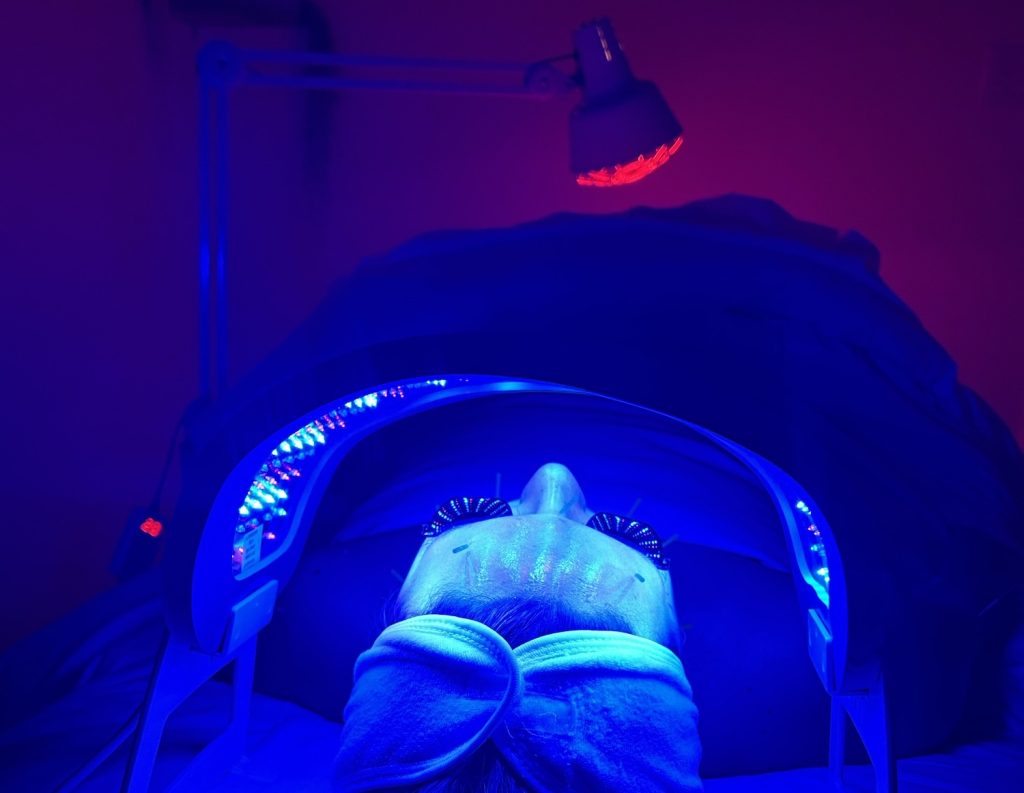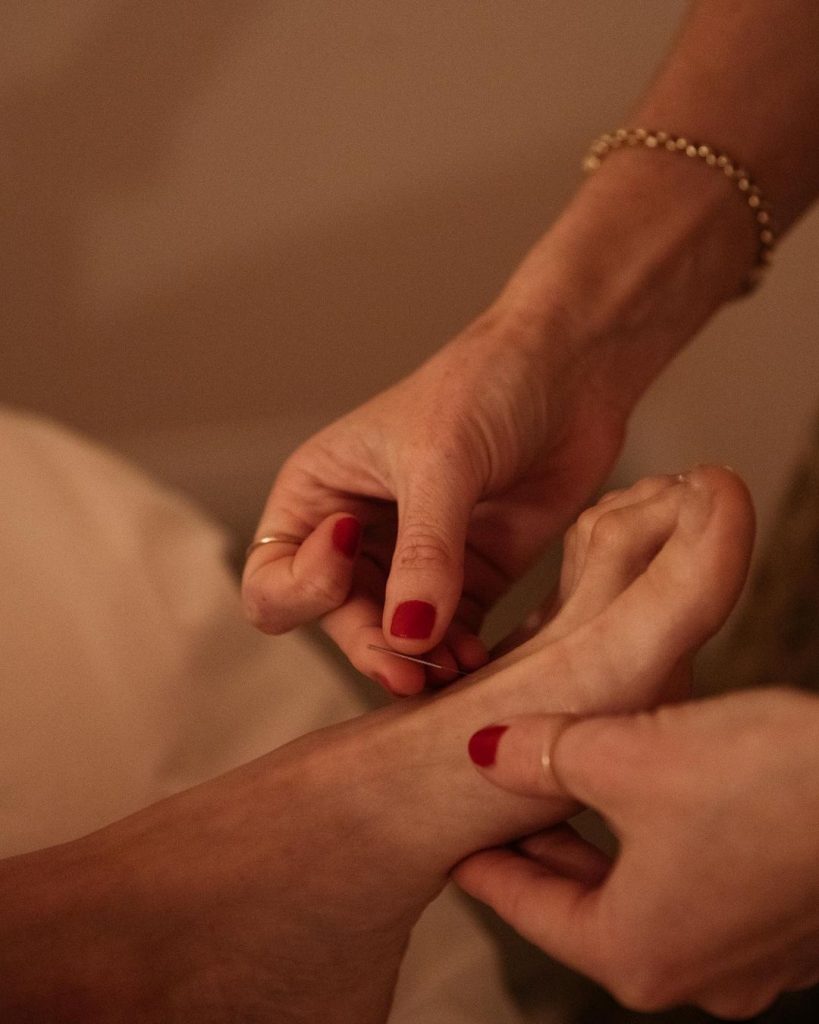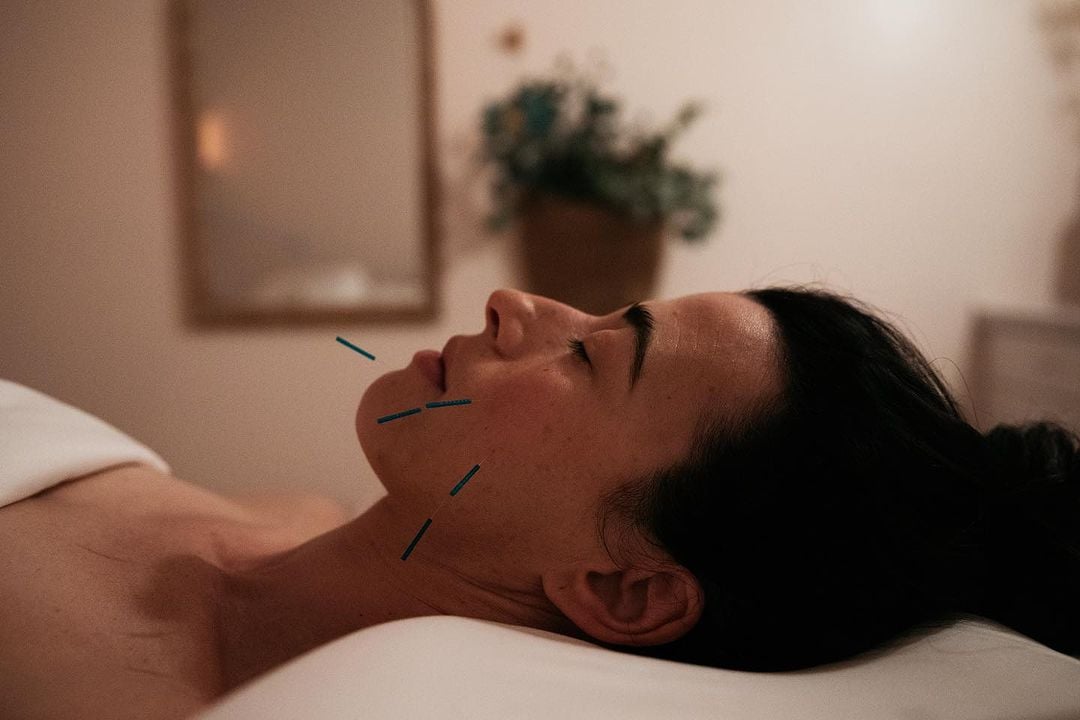My acupuncturist just called me hot. Well, sort of. She told me I have excess heat in my body, as evidenced by my fluttery pulse; my red, slightly cracked tongue; and the cystic blemish on my chin.
I’m at Oh Glory, a holistic health spa in North Park offering facials, massage, cupping, and acupuncture. I’ve signed up for the latter today—specifically cosmetic acupuncture, a treatment said to help tone your face, reduce fine lines and wrinkles, and promote the production of collagen and elastin.
According to my provider, Dr. Pia Franco, practitioners of traditional Chinese medicine have been poking folks for beauty reasons since around 200 BC, when royal concubines used acupuncture to preserve their health and youthful appearance. And, yes, it involves needles in your face.

Dr. Franco is already making me feel less nervous about it, though. We start our consultation with a cup of herbal tea in Oh Glory’s soothing, impeccably decorated reception space. As I sip, she asks me about, well, everything—not merely my cosmetic concerns (consistent breakouts and some emergent fine lines on my forehead), but also my digestion, sleep, diet, menstrual cycle, and general physical and emotional wellness.
I tell her about my stomach problems and the recurrent pain in my left shoulder, the muscle tightness that prevents me from lifting my arm. We’ll address those, too, because, here, every cosmetic acupuncture session (called “You Are Glowing” on the spa’s menu) includes placement of needles from head to toe.
“I believe that you can’t really do just cosmetic acupuncture without integrating full-body acupuncture,” Franco says. “[It] is included to touch on that root imbalance of why the cosmetic complaint is occurring. If you have lines on your forehead, that shows that there’s an imbalance in the liver system, so you have to touch on the body and regulate the liver system in order to address how that’s manifesting on the face.”

Franco checks my pulse and asks to look at my tongue, which she says are two other ways doctors of Chinese medicine identify imbalances. People with too much heat might experience a red face, difficulty sleeping, or nonstop ruminative thoughts. Excess cold, on the other hand, can manifest as bloating, digestive upset, or irregular menstrual cycles, she continues. The pulse might be slow, the tongue pale. Acupuncture is intended to help restore balance, no matter which side of the scale you’re on.
In the treatment room, I strip down to my skirt, climb under a cozy blanket, and settle in to get poked. But, first, Franco gives my face a pass with a microcurrent machine, a small, handheld device that “delivers a sub-sensory current—meaning that you don’t feel it—that mimics our body’s natural electrical flow,” she says. Designed to boost collagen and elastin production and tighten facial muscles, the machine may help create a more lifted, sculpted visage. “It’s like taking the face to the gym,” Franco adds.
Afterward, Franco brushes her hands over my limbs, searching, she says, for abnormalities. “It might feel like a hole or a knot of energy,” she tells me. Those areas are the best spots in which to place acupuncture needles.

“Does it feel tender here?” she asks often. Usually, she’s right. She inserts each needle by quickly tapping it through a metal tube into my skin.
“This is basically setting off a healing tsunami,” Franco explains as she gently places a needle near my lips. The tiny wound stimulates a repair response at the site the needle enters, bringing more oxygen and nutrients to the area and driving collagen production. More broadly, acupuncture “tells the [brain] to release specific hormones needed for your body’s imbalance,” Franco says. “It [sends] a blueprint for healing.”
The critical question: Does it hurt? Not really. You’re aware of the needle, but it’s too small to truly sting. I feel some slight discomfort when Franco adjusts the needle in more sensitive areas—my hands, my face—but it quickly mellows. It isn’t hard to relax.
In addition to placing needles in my chin, forehead, and cheeks and around my mouth, Franco also finds acupuncture sites on my feet, hands, arms, legs, and left shoulder and the back of my neck. Then, she sets little shields over my eyes and brings a LED light mask over my face, programming it to flash blue and red. “The red light penetrates the muscle layer, getting to the wrinkles,” Franco says. “The blue light penetrates just under the dermal layer and … is able to kill bacteria, [targeting acne].”
She steps out for 15 minutes to let the mask and needles work their magic. I lay as still as I can, experiencing a (not unpleasant) full-body tingling sensation. Honestly, I feel great. I could nap like this.
When she returns, Franco gently removes each needle and applies a light face oil to my skin in preparation for gua sha, a traditional Chinese medicine practice that involves gently scraping the face and neck with a small, flat tool. It’s intended to promote better blood circulation and lymph drainage. “It basically brings an overall glow to the face,” Franco says. Once she’s done, she wipes my face with a hot towel and sends me back into the world.
That evening, that recurrent pain in my shoulder is actually more intense—probably because I was tensing in anticipation of the needles. But over the course of the following day, I notice the terrible joint ache is suddenly, conspicuously absent, and I can lift my left arm again without being stopped in my tracks by tension and pain. My skin looks healthy and luminous, my face depuffed. The cystic zit does not disappear overnight, but Pia’s an acupuncturist, not a magician.
PARTNER CONTENT
Patients who are consistent with the treatment have reported plumper, more lifted skin and fewer wrinkles long-term, as well as better digestion and a healthier respiratory system. “We recommend coming about once a week to really see results,” says esthetician Serena Kahlen, who co-owns Oh Glory.
Of all the potential benefits, though, one stands out as most surprising—and most critical. “I like to think that on an emotional level, it helps women accept their appearances and reframe their idea of aging,” Franco says. “[It encourages them] to honor their journey as they age.”













